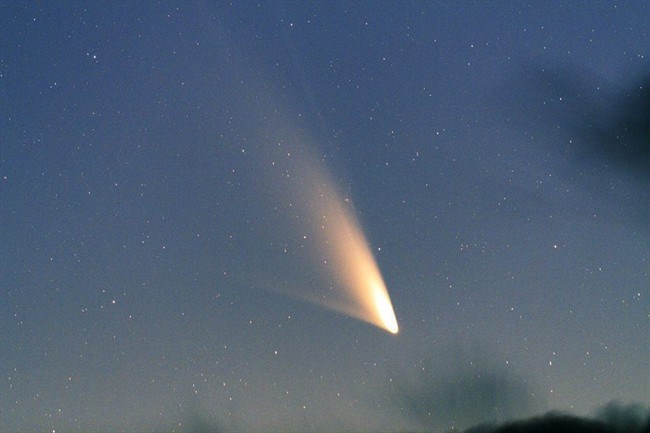Nanaimo stargazers hope for clear skies as the solar system's newest comet makes its cosmic debut.
The green comet ISON, or C/2012 S1 grew brighter this week, raising expectations it could give the most spectacular light show since Hale-Bopp, in 2005.
While comet behaviour can be difficult to predict, some astronomers believe the size of the comet, and a trajectory within a hair of the sun could make for an amazing display - if it passes the sun without being burned up.
When interstellar gravitational forces disturb the "Oort cloud" of primordial cosmic material beyond Pluto, it can send a ball of the material hurtling toward the sun.
A comet is born. Comets are frozen masses of space dust, liquid and gases. Once warmed by the sun, the material thaws, creating a showy tail of sunlit debris.
"This is the first time this comet has come by," said Bill Weller, a Nanaimo Astronomy Society director.
On Nov. 28, ISON will nearly touch the sun's 5,600-degree Celsius surface.
"It will be 2.8 kilometres from the sun," Weller said.
Astronomers don't know if the 5,000-kilometre ball will survive the heat.
"That's open to speculation right now," Weller said.
Should it survive, the comet will be most visible in the morning sky, and will be closest to Earth on Dec. 26, 4.5 million kilometres.
Because of this, some call ISON the Christmas comet.
It's now visible with good binoculars at a point almost in line with the Big Dipper's handle.
Watch for photographs soon, at nanaimoastronomy.com.
"I'm sure our photography group will be getting some pictures," he said.
Weather permitting, of course.



